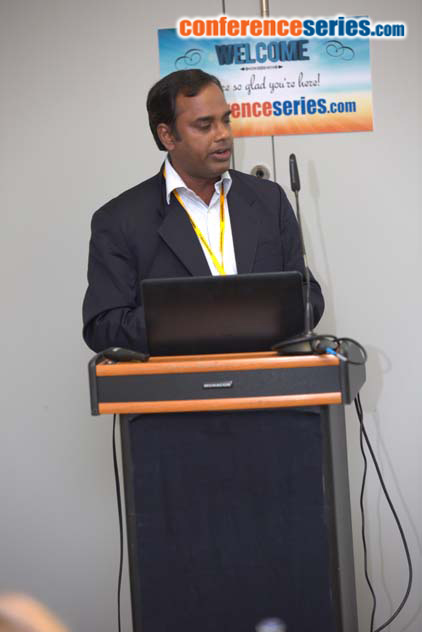
R Anand
National Institute of Technology, Tiruchirappalli, India
Title: Waste to energy conversion using fast pyrolysis
Biography
Biography: R Anand
Abstract
Ever increasing energy demand, continued exploitation of fossil fuel sources, uncertainty in the cost of petroleum-based fuels and the detrimental effects related to the use of fossil fuels on the environment have encouraged to search new and alternate sources of fuel for automobiles. In recent years the quantity of waste has increased significantly all over the world. Most of the wastes are inorganic, non-biodegradable nature and affects the landfill, so waste disposal has been a major problem in most of the countries. The conversion of useful energy from wastes can be divided into thermo-chemical and biological conversion. Thermo-chemical conversions are more suitable for converting the inorganic wastes into useful energy. There are several thermo-chemical conversion routes available for converting the waste into energy, such as pyrolysis, gasification, and combustion. The fast pyrolysis has added advantage compared to gasification and incineration and promising way to obtain diesel like fuel from the wastes. Most of the research works reveal that the pyrolysis fuel has best replacement for the fossil fuel but it has slightly higher engine out emissions compared to fossil fuel. These emissions are major threat to human health and living organisms and it has been minimized by the advanced technologies. Common rail direct injection (CRDI) is one of the appropriate methods to reduction in the engine out emissions by and enhances the engine efficiency. The thermal efficiency increased upto 36 to 40% and unburnt hydrocarbons, particulate matters, and carbon monoxide emissions are reduced by 55%, 50%, and 60% respectively at rated power, but NO emission is increased by 20%. The quantity of EGR and mode of Split Injection are predominant methods for controlling the NOx emission. The high-pressure injection enhances the turbulence and homogeneity in the air-fuel mixture to obtain the better thermal efficiency as well as lower emissions.
Recent Publications
1.Gong, Yichao; Wang, Dan Ping; Wu, Renbing; Gazi, Sarifuddin; Soo, Han Sen; Sritharan, Thirumany; Chen, Zhong, "New Insights into the Photocatalytic Activity Of 3-D Core-Shell P25@Silica Nanocomposites: Impact of Mesoporous Coating", Dalton Transactions, Vol 46, 2017, pp 4994 – 5002.
2. Danping Wang, Prince Saurabh Bassi , Huan Qi, Xin Zhao, Gurudayal, Lydia Helena Wong *, Rong Xu, Thirumany Sritharan, Zhong Chen, “Improved charge separation in WO3/CuWO4 composite photoanodes for photoelectrochemical water oxidation”, Materials, Vol 9(5), paper no 348, May 2016.
3.Chao Wei, Zhenxing Feng, Murat Baisariyev, Linghui Yu, Li Zeng, Tianpin Wu, Haiyan Zhao, Yaqin Huang, Michael J Bedzyk, Thirumany Sritharan, Zhichuan J Xu, “Valence Change Ability and Geometrical Occupation of Substitution Cations Determine the Pseudocapacitance of Spinel Ferrite XFe2O4 (X = Mn, Co, Ni, Fe)”, Chemistry of Materials, Vol 28(12), June 28 2016, pp 4129-4133
4. Shukla, Sudhanshu; Xing, Guichuan; Ge, Hu; Prabhakar , Rajiv Ramanujam ; Mathew, Sinu ; Su, Zhenghua; Nalla, Venkatram; Venkatesan, Thirumalai; Mathews, Nripan; Sritharan, Thirumany; Sum, Tze Chien; Xiong, Qihua, "Origin of Photocarrier Losses in Iron Pyrite (FeS2) Nanocubes", ACS Nano, Vol 10(4), 26 April 2016, pp 4431 - 4440
5. Chao Wei, Linghui Yu, Chenlong Cui, Jiadan Lin, Chen Wei, Nripan Mathews, Fengwei Huo, Thirumany Sritharan, Zhichuan Xu, “Ultrathin MnO2 Nanoflakes as Efficient Catalysts for Oxygen Reduction Reaction” ChemComm, Vol 50(58), 25 July 2014, pp 7885-7888.


